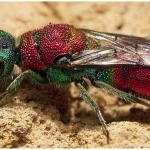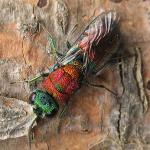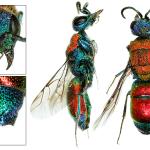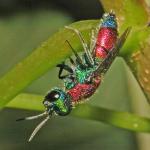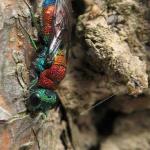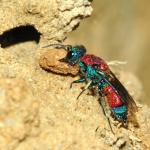Identification keys and general biology are given in Morgan (1984) and Chapman (1870).
Widespread throughout southern England and north to North-east Yorkshire. In Wales, mostly confined to coastal areas. Also in the Channel Islands. Not recorded in Scotland or Ireland. However, as the range of its host extends into southern Scotland, this chrysidid might be expected further north.
Overseas, found in many parts of mainland Europe (Norway, Sweden, Finland, Denmark, The Netherlands, Belgium, France, Spain, Germany, Italy, Poland, Hungary and Romania) and extending eastwards to the Caucasus, and southwards to North Africa.
Not listed in Shirt (1987) or Falk (1991); however work for this Atlas suggests that it may be in decline and that its status should be reviewed.
Found around the nest sites of its host which are usually in bare vertical banks of hard earth, often of clay or sometimes sand. Also recorded from the wall of a church.
Probably univoltine; June to August, sometimes during May and rarely in September.
Females have been found on umbellifers.
No information available.
1998


